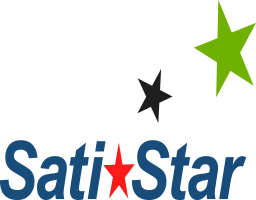Strategy & Execution
Few will argue the importance of having a well thought out business strategy. For decades, business planners and analysts have been creating such strategies that have remained a theoretical concept that has never become actualized or deployed within the company. Alternatively, a partial deployment of the new strategy may result in some functional silos deploying the new strategy to some extent, while other functional silos continue to sail merrily in the old direction. Little is achieved in either scenario.
SatiStar has world-class expertise in facilitating companies through a process where they develop their mission, vision and values, and then develop a coherent business strategy that is effectively deployed at all layers of the organization and in every functional silo. Our expertise is in achieving rapid and total alignment of the organization around the chosen business strategy, and in building in the closed-loop management control processes that enable the company to remain on course, or to make rapid changes as the market requires a strategy adjustment.
Capability Maturity Model (Integrated) (CMMI)
Companies are more or less process and quality centric in the business models and operations. CMMI is a process improvement approach that provides organizations with the essential elements of effective processes that ultimately improve their performance.
CMMI can be used to guide process improvement across a project, a division, or an entire organization. It helps integrate traditionally separate organizational functions, to create a set of process improvement goals and priorities, with a point of reference for appraising current processes. A formal comparison of a CMMI model to your processes is called an appraisal.
Corporate Governance
Corporate governance is the system by which business corporations are directed and controlled. The corporate governance structure specifies the distribution of rights and responsibilities among different participants in the corporation, such as the board, managers, shareholders and other stakeholders, and spells out the rules and procedures for making decisions on corporate affairs. By doing this, it also provides the structure through which the company objectives are set, and the means of attaining those objectives and monitoring performance.
IT Disaster Recovery
Disaster recovery is the process, policies and procedures related to preparing for recovery or continuation of technology infrastructure critical to an organization after a natural or human-induced disaster.
Disaster recovery planning is a subset of a larger process known as business continuity planning and should include planning for resumption of applications, data, hardware, communications (such as networking) and other IT infrastructure.
A business continuity plan (BCP) includes planning for non-IT related aspects such as key personnel, facilities, crisis communication and reputation protection, and should refer to the disaster recovery plan (DRP) for IT related infrastructure recovery / continuity.
IT Service Management
IT service management (ITSM) is a discipline for managing information technology (IT) systems, philosophically centred on the customer’s perspective of IT’s contribution to the business. ITSM stands in deliberate contrast to technology-centred approaches to IT management and business interaction.
ITIL® is accepted worldwide as the documentation of best practice for IT Service Management. It is used by hundreds of organisations around the world.
Infrastructure Preparedness Pandemic Planning
In this age where diseases and viruses can travel around the world in a matter of hours, there is a need to be prepared for managing the disruptions caused by a declared pandemic. This is particularly relevant for maintaining key operations that support a business such as IT and other infrastructure services.
Management Control Systems
The lack of accomplishment of objectives is an all too common problem in organizations world-wide. Performance surveys across multiple organizations and industries routinely show excessively wide variation in the percentage of objectives people achieve relative to their commitments.
This workshop teaches simple tools and techniques for managers to apply a world-class methodology for the operational control of processes. Participants learn an effective and practical process for helping people at all organizational levels reliably meet their business objectives. The workshop takes direct aim at improving management and team effectiveness and capability, as well as improving teamwork and synergy. The tools and approach used are based on best practices used by leading companies known for superior execution. Participants learn how to apply closed-loop thinking to significantly enhance their ability to achieve desired results.
Policy Deployment
Policy deployment is a company-wide mechanism for creating and propagating plans for the achievement of objectives at all levels of the organization. This course is designed to provide participants with the mechanisms needed to create alignment between actual activities and the overall strategic intent of the organization. The organization can be the entire company, a single facility location, or just a single department within the company. Organizations intent on implementing major change initiatives such as Lean Manufacturing or Six Sigma often use Policy Deployment to help assure their organization plans and executes well on the right business priorities.
Also known as Hoshin Kanri, this leadership process helps align activities at all levels of a company aligned with its key improvement themes.
Practical Project Management
This workshop is designed to enable participants to plan, organize, resource, cost, manage, implement, track, verify, analyze, report and control any project.
It also identifies the characteristics of successful and effective project management.
Strategic Logic Modeling with Strategy Maps and Results Chains
A Strategy Map is a diagram that describes how an organization creates value by connecting strategic objectives in explicit cause-and-effect relationship with each other in the four BSC objectives (financial, customer, processes, learning and growth). Strategy Maps are a strategic part of the Balanced Scorecard framework to describe strategies for value creation.
Results Chain is a systematic approach for linking desired results/outcomes and resource decisions, while considering all of the required conditions for realization
WHAT PEOPLE ARE SAYING
SatiStar's Experience Makes The Difference!
